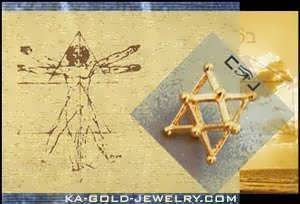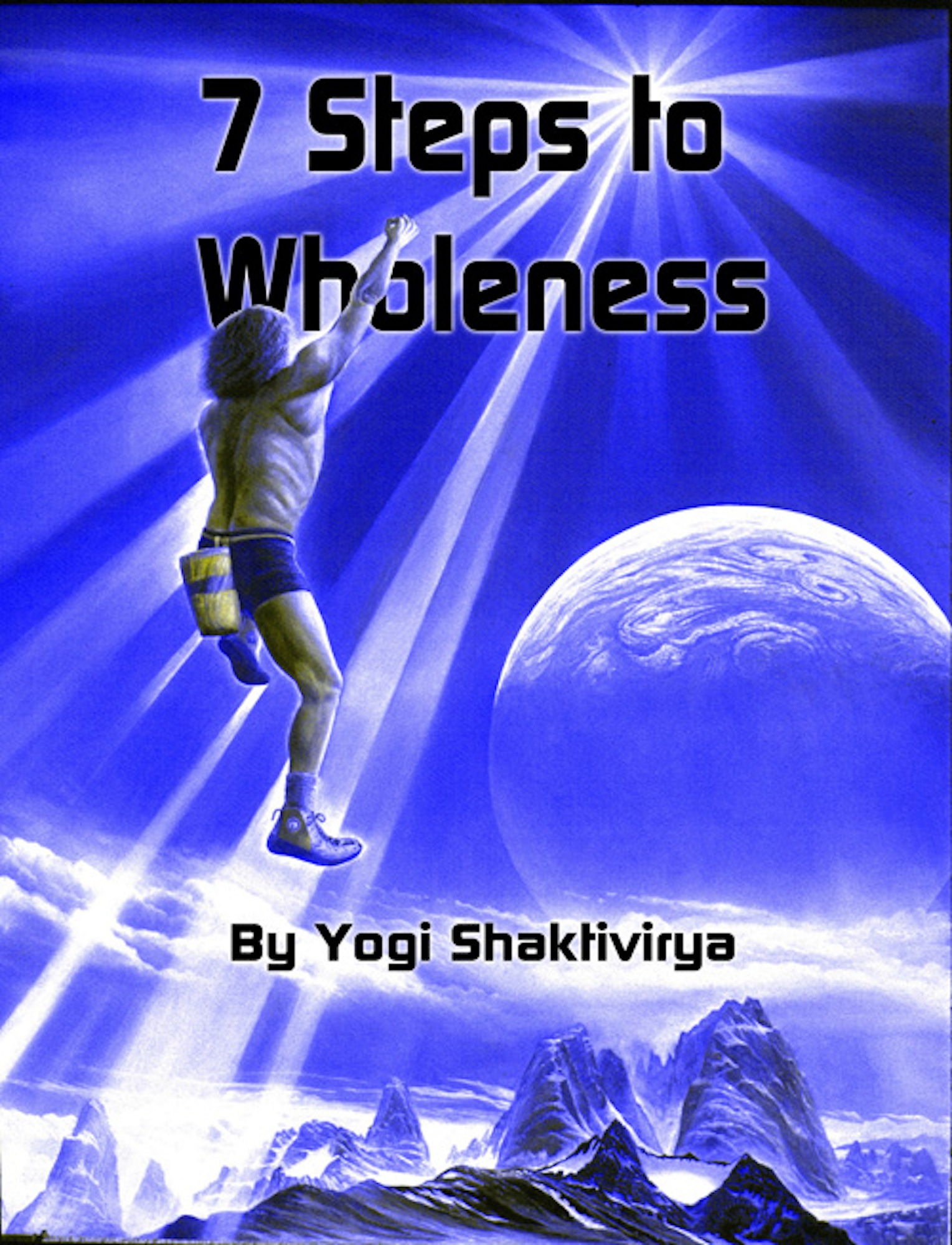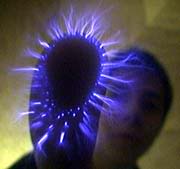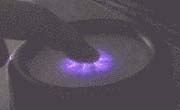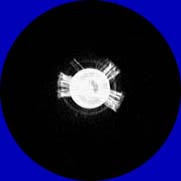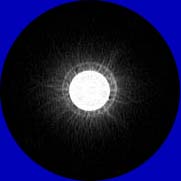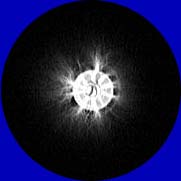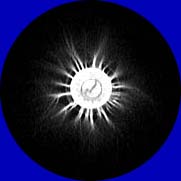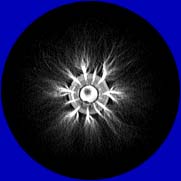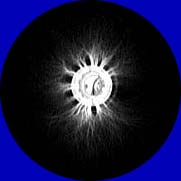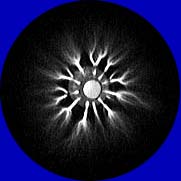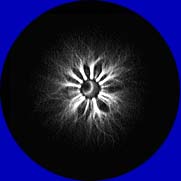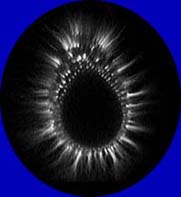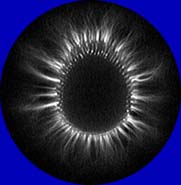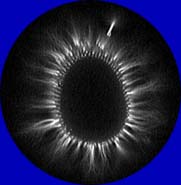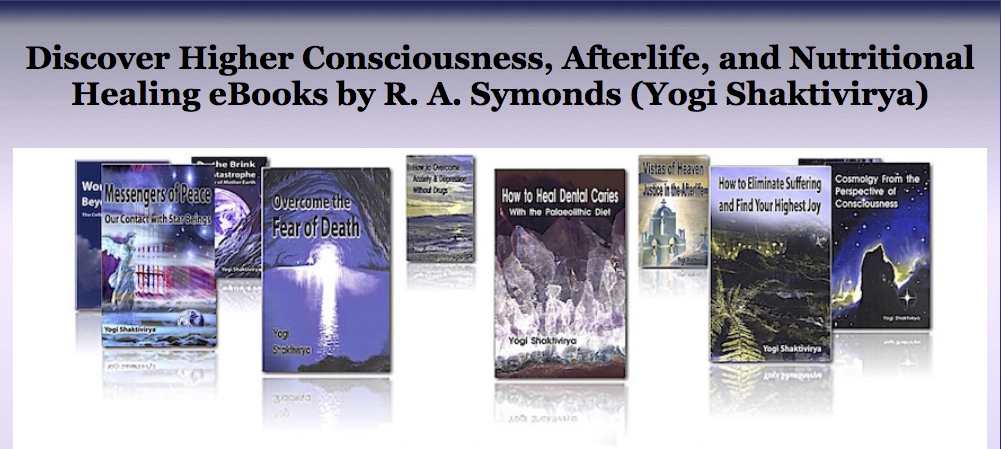Monoatomic Elements and Their Strange Properties
(Alchemy Super Foods)
I welcome all to this most intriguing area of knowledge! I am still new to this research myself and discovered some interesting information while writing this material. The field of modern alchemy is becoming more established in alternative medicine, and in the area of the mind, body, and spirit community which in itself is also growing. Even though modern alchemy is a controversial subject, it can also be an utterly fascinating area of research to explore, with classic alchemy having its origins going as far back as ancient history.

Click on above image for my entire website on Modern Alchemy.
Learn the Secrets of Modern Alchemy
Monatomic Elements Have Amazing Effects
Modern alchemy is comparatively unknown in conventional thought, only its popularity in unique areas of interest is expanding exponentially. Because of the remarkable clams of health and rejuvenation along with the degree of difficulty in tracking down and identifying the actual materials created through modern alchemy, very few scientists take this subject seriously. Those who do accept modern alchemy are ridiculed.
|
|
Monatomics are single ("mono") atoms ("atomics") not bound to one another. Usually gases such as helium and argon are said to be "monatomic." However the monatomic atoms we are concerned with are those derived from or related to metals and rare earth elements such as gold, platinum, rhodium, ruthenium, palladium, iridium, indium, titanium, silver, copper and magnesium. In their monoatomic (separate) state, these atoms no longer behave as metals because no valence electrons are available for chemical reactions to occur. As separate atoms, they act very differently and much more mysteriously as compared to when they are joined together to form metals. Monatomics have ceramic properties, tend to be superconductive (in their high spin state), are inert, and are therefore hard to identify using conventional means.
When David Hudson (starting in 1975) discovered and did extensive research on the monatomic substances, he spent 8.7 million dollars trying to identify them using massive spectral analysis equipment! He discovered that monatomics existed everywhere in the earth's crust and therefore had to be found throughout nature. Hudson frequently called these mysterious substances ORMES (Orbitally Rearranged Monoatomic Elements) or ORMUS or "m-state" particles.
Many plants are known to contain these elements even many of the vegetables and herbs grown for our food, especially if the soil in which they are grown is of volcanic origin. Sea salt is also known to contain what is termed "ormus" (white powder gold) and there are various ways to extract it that you can find on the internet. However other stuff can get concentrated into the mixture as well which could be harmful such as lead, mercury, cadmium and arsenic, and taking the right dose is critical. It is far better to get your ormus from a trusted commercial source if you are still unfamiliar with all the tricky aspects of creating your own ormus. Monatomic gold is also not to be confused with gold salts (gold chloride) which are toxic, and are not the same thing as colloidal gold either, which is still metallic in nature. The difference in the quality and behavior of the monatomic element, as in the case of monatomic gold for instance, is that it typically has three electrons missing, is water soluble, and it is not attached to any other atom, compound or molecule.
Plant sources are also known to sometimes contain various amounts of monatomics (monatomic elements). Common food sources include: green beans, carrots, egg plant, flowering kale, coconut milk, almonds, bilberries, grapes, grape seed, and flax seed. Monatomic gold occurs naturally in the violet skins of fruits, vegetables and herbs. Many herbs, algae and herbal extracts are also known to sometimes contain these elements, they include: aloe vera, sheep sorrel, water cress, St. John's wort, golden seal, blood root, burdock root, violets, and Klamath lake blue green algae. This fact may explain some of the health rejuvenating properties so often found in the health foods, herbs and super food supplements eaten. Go here to find an excellent chart (from outside this website) of materials containing monatomic rhodium and iridium. However, these plants, algea, sea salts, etc. are still not reliable sources and the amount present of which element depends mainly on how and where they are grown or found.
All Minerals Are Essential, Not Just Monatomic Elements
I am truly amazed how all the minerals together, including macro, trace elements and monatomic elements can be an extraordinary boost to one's happiness and spiritual well-being. This fact has turned out to be absolutely true in my own experience. While boosting my health, energy and well-being immensely, they have saved me tremendous amounts of money on groceries too as my body seems not to need nearly as much food when all the minerals are provided, especially calcium and magnesium. Because most commercialized food comes from plants grown in mineral-depleted soils throughout the world, the modern American diet (MAD) provides only one tenth or less than all the minerals actually needed for optimal health. These minerals must be supplemented otherwise there cannot be the kind of health that all are meant to really enjoy, such as complete freedom from arthritis, osteoporosis, tooth decay, diabetes, cancer, emotional and mental problems, insomnia, chronic fatigue, lack of libido, etc.
The way one takes in minerals is critical. Try to get as many different minerals and trace elements as possible from as many sources as possible such as loads of ionized (alkalized) water instead of snacking between meals, plenty of dolomite, kelp, full spectrum mineral supplements, and an advanced liquid multivitamin and colloidal mineral supplement such as Fuzion. Fuzion is a powerful blend of 600 ppm monatomics, 12 vitamins, 17 herbs, 18 Amino Acids, 75 plant minerals, CoQ10, Omega 3,6,9 and much more. With it's immune boosting, brain charging, body regeneration, anti-aging super-health qualities, Fuzion is a true superfood with a standard vitamin and mineral selection for a good daily supplement and then packed full of trace elements, M-States and herbal extracts making this your full circle solution for better health, a better body, a better mind and better living! Please Go here for more info on Fuzion.
ZeroPoint Technologies has accomplished more interesting modern alchemy research with monatomics than any other company I have known. They have found out exactly how and which trace elements react in our bodies and how to modify or "transmute" them into a form that can be most profoundly utilized for maximum spiritual benefit, development and well-being. They have provided rather exciting results for their customers and continue to manufacture marvelous products to boost mental clarity, libido, spirituality, and many other aspects of health and well-being. I am very excited to share with you their great work.
|
Introduction to Monoatomic Elements and Their Mysterious Qualities
I wish to thank you for your interest in this most fascinating subject! In the next few articles you will learn the secrets of modern alchemy, the rather fascinating benefits of monatomic ions, and their amazing characteristics.
If not already, in the near future, the monoatomics movement will be fully established in the wellness enterprise, to an even greater degree in the field of alternative medicine, and to some degree in the mind, body, and spirit community which in itself is also getting larger and more encompassing. Modern alchemy is a relatively unknown concept in conventional education, it is only commonly accepted in comparatively unusual areas of interest.
The comming revolution in alchemy is related to research involving a few substances: monatomic (or monoatomic) and diatomic particles. Our standard academic institutions inform us that the three phases of matter are gasses, liquids, and solids (but more recently there are the newer plasmas, condensates and fluid crystals). A certain number of solids crystallize into arrangements we term metals. What we have not been taught by mainstream education is the existence of another form of matter termed "monatomic." These are furthermore known as ORMUS and m-state elements, and according to the latest scientific knowledge, these more or less uncompounded atoms on the periodic chart have the ability to be either monatomic or diatomic (two atoms loosely combined) as small atomic "condensates," that are known in the scientific community as "Bose-Einstein Condensates." Because of this research, these materials are also widely known as "m-state" atoms. However the popular term "monatomic molecules" could be technically incorrect, because if they were "glued" together as molecules (the simplest structural unit of a compound), they would not consist of single atoms (being monatomic) at all, but would be in their more conventionally known metallic state.
The main part of the periodic chart of elements consists of the "transition elements," meaning they can transform from metallic to monatomic or diatomic by way of chemical usage or through alternative methods (that some would call "shadow chemistry" or "arcane chemistry" or "alchemy"). Gold for instance, can have metallic properties when two or more atoms of gold form a micro cluster, and ceramic properties when divided into separate atoms as in the case of monatomic (monoatomic) or white powder gold in its "ormus" state. When gold exists in the chemically inert (monatomic) state of separate atoms, its ceramic properties are said to exhibit superconductive effects at human body temperatures. The chemically inert properties of monatomic elements make it possible to safely ingest them for great benefits to the physiology and general well-being.
Consumers of Monatomic Elements (Ions) Experience Interesting Benefits
Those who take these monatomic ions (monatomics) are describing an extensive list of benefits, including increased stamina and energy, improved sex drive, better immunity, looking and feeling younger, and increased mental ability and concentration. They obviously seem extremely happy with the results they're experiencing. The reason for these benefits is due to the ability of monatomic elements to enhance the biological reactions occurring at the cellular level, and at the energetic and electrical fields.
It is within the cells of the body where high-level wellness begins. The reactions necessary to create these surprising materials produces a great deal of hydrogen. When more hydrogen in the body is present, the surface tension of liquid water is minimized. After taking any water-based liquid with low surface tension of the water molecule, the effect also reduces the surface tension of the cellular walls allowing greater nutritional absorption and a more efficient utilization of oxygen which replaces cellular carbon dioxide.
In conventional knowledge, only glandular secretions, hormones and electrical messages are used by cells to communicate with each other, however more recent discoveries revealed the existence of microtubules utilizing the photons of light at an extremely low luminosity, especially in the area of the central nervous system. The human body is therefore a dynamic bioelectric organism not only requiring the unimpeded conduction of bioelectrical circuitry but also an exchange of a "pure" form of information similar to light by means of these "optical fiber" microtubules.
The superconducting properties of these m-state atoms (monatomics) transform our bodies at the cellular level, including our organs, muscles and tissues of the brain and nervous system, into superconductors of a much higher flow of photons because monoatomics are, in a manner of speaking, a "liquid" light or a "powder" of light. In a sense, the presence of monoatomic particles inside the body changes the entire bioelectro-chemical organism from being "strung" with simple copper wiring to being "installed" with fiber optics. When compared with an equivalent amount of electric wiring, fiber optics can carry thousands of times more information.
One can certainly feel almost overwhelmed with too much energy, if too great an amount is consumed. There is no doubt about its effects! This energizing effect is caused by an increased electrical output of one's metabolic process under the influence or presence of these "superconducting" elements. This effect is completely different from the usual caffeine and/or sugar rush of conventional beverages. However it is more in tune with the effect of vitamins and herbs to increase metabolic efficiency, yet still quite different in that it operates on a much finer and more ubiquitous level. According to experiments done through Kirlian photos, the "power" of output tells an amazing story. This power output seems to increase after the ingestion of a monatomic formula showing that the electric field, or electromagnetic aura of the individual actually does increase in size and intensity.
Nuclear physicists in 1989 discovered that atoms of certain elements exist in micro groups. These are small groups of two to several hundred atoms. Most of the transition group precious metals in the center of the periodic table have a monatomic state. If you have more than a specified number of these atoms in a micro cluster, the atoms will organize themselves into a lattice structure with metallic properties. If you have less than the critical number of atoms needed to form a structure, they exist as monatomic atoms with ceramic properties. Monatomic atoms are not held in place by the exchange of electrons of neighboring atoms as are atoms in a classical lattice. The critical number of atoms for rhodium is nine (9) and the critical number of gold atoms is two (2).
For metallic properties to take place, only two or more gold atoms must join together. However, if you have nine (9) or fewer rhodium atoms in a micro cluster, the micro group spontaneously brakes down to become a group of monatomic rhodium atoms. You might wonder why gold has one level of dissolution and rhodium another. This is a question for nuclear scientists to ponder. Monatomic elements also have no valence electrons available for reactions with other substances. In other words, monatomic elements have many properties similar to ceramic substances which are chemically inert. Analytical chemistry methods, which require the existence of valence electrons, cannot be used to identify any atom existing in a monatomic state.
However, there must be some kind of shadow chemistry which still involves monoatomic atoms. David Hudson, a famous researcher in the field of transitional elements, identified the same color changes in monatomic chemistry that occur in metallic chemistry. Similar chemical reactions still may occur with monatomic elements but to a much lower degree. Chemical reactions which take a few days with metallic chemistry may take months or years with monatomic atoms involving some kind of "shadow chemistry" or "alchemy."
If the above statement is true, then what exactly is the actual process at work here? Are there really no valence electrons available for reactions with monatomic atoms? Also simply calling whatever kind of reactions, if any, that might be occurring a "shadow chemistry" or "alchemy" does not help to define the phenomena either. These discoveries are recent enough not to be found in any textbooks yet, and the full implications have not yet been evaluated by the scientific community.
We have learned so far that a metallic element tends to be chemically active (tending to rust or corrode) and a relatively good conductor of electricity and temperature changes, while monatomic elements of the same kind acts more like a ceramic in that they poorly conduct electricity and heat and have only neutral chemical properties. And, according to Hudson, under certain conditions at room temperature, monatomic atoms act like superconductors. However, Dr. Kogan at the Institute of Mineralogy, Geochemistry, and Crystal Chemistry of Rare Earth's in Kiev, does not agree with all of Hudson's discoveries as being valid. Nevertheless, Russian scientists from that same Institute do agree that those atoms in a lattice pattern that react as metals, also exhibit ceramic properties while in a monatomic state. It would be interesting to study a detailed critique of Hudson's findings from that source.
All the heavy elements from the central section of the periodic table that can exist in the form of monatomic particles have been found. These elements exhibit "half filled" bands of valence electrons and given as follows along with their atomic number (of protons) in brackets: Ruthenium (44), Rhodium (45), Palladium (46), Silver (47), Osmium (76), Iridium (77), Platinum (78), and Gold (79). Micro clusters of many other metallic elements in this same part of the periodic table have also been discovered. As long as these elements are not locked into a lattice, their characteristics behave quite differently than the same atoms that are locked. In other words, it is the grouping of atoms which define their qualities rather than just the number of neutrons and protons in the nucleus as previously assumed. If these atoms are not locked into a network or grouping of material, even though having identical atoms, their properties are no longer metallic!
This phase of matter known as monatomic elements are recently discovered and hidden throughout the universe, remaining unknown for such a long time right under the noses of scientists without detection because they are impossible to detect by any normal analytical techniques. Such a form of material would simply be a scientific curiosity if it were not for the fact that Hudson claims massive amounts of this substance exists throughout the earth's crust and that their properties are so mysterious in some ways and amazingly beneficial in others. In order to find monatomic particles, one has to first convert them back to their normal metallic state to make it possible for them to be detected with conventional methods. This rather serious limitation to the way these particles can be detected explains why so much of the earth's matter exists in a previously undiscovered form. No conventional detection techniques involving the interaction with their valence electrons can be used to find monatomic elements. As long as the valence electrons remain unavailable, the atoms remain unidentifiable and the only way to begin to identify this stealth material is know in the first place what you are looking for.
At the conclusion of this article, we have now learned that the monatomic form of an element exhibits physical characteristics and other peculiarities which are entirely different from its metallic form. According to classical literature, one of these curious properties is that the white powder exhibits a fluorescence, another is its behavior as a superconductor at human body temperature, causing it to "ride" on the earth's magnetic field, giving it the powers of levitation. Because the weight of these elements vary widely with the magnetic field of the environment and the temperature, it is impossible to measure their actual gravity. Unbelievable as this may seem, under some influences, monoatomic material weighs less than zero! An additional and quite fascinating fact is when one consumes the correct amount of these monatomic elements in their purest form, especially the white powder gold or gold ormus, one can experience great benefits such as increased stamina and energy, improved sex drive, better immunity, looking and feeling younger, and increased mental ability and concentration.
|
Monoatomic Elements and Their Strange Properties
I welcome all to this most fascinating topic in modern alchemy! In the coming years, the monoatomics movement will (if not already) be firmly established in the wellness market, to an even greater degree in the realm of alternative medicine, and to some degree in the area of the mind, body, and spirit community which in itself is also growing. Modern alchemy is comparatively unknown in conventional thought, only its popularity in unique areas of interest is expanding exponentially such as those interested in the mystical and "New Age" movements.
The approaching trend is related to a few substances consisting of monatomic (or monoatomic) particles or ions which include gold, rhodium, iridium, silver, and many other elements along or near the center of the periodic table of elements. The classic knowledge teaches us that the three phases of matter are gasses, liquids, and solids (but at this moment in that place are the newer plasmas, condensates and fluid crystals).
A certain number of solids crystallize into arrangements we term metals. What we have not been taught by mainstream education is the existence of another form of matter termed "monatomic." These materials are furthermore known as ormus and m-state elements or atoms, and according to the latest theories of science and nature, more or less uncompounded atoms on the periodic chart also can be diatomic (having two atoms) in the form of small atomic "condensates." However the popular term "monatomic molecules" is technically incorrect, because if they were "glued" together as molecules (the simplest structural unit of a compound), they would not consist of single atoms (be monatomic) at all, but would be in their more conventionally known metallic state.
The main part of the periodic chart of elements consists of the "transition elements," meaning they can transform from metallic to monatomic or diatomic by way of chemical usage or through alternative methods (that some would call "shadow chemistry" or "arcane chemistry" or "alchemy"). Gold for instance, can have metallic properties when two or more atoms of gold form a micro cluster, and ceramic properties when divided into separate atoms as in the case of monatomic (monoatomic) or white powder gold in its "ormus" state.
When gold exists in the chemically inert (monatomic) state of separate atoms, its ceramic properties are said to exhibit superconductive effects at human body temperatures. The chemically inert properties of monatomic elements make it possible to safely ingest them for great benefits to the physiology and general well-being.
The Benefits and True Nature of Monatomics
Users of these monatomic ions are describing a long list of benefits, including increased stamina and energy, improved sex drive, better immunity, looking and feeling younger, and increased mental ability and concentration. They obviously seem extremely happy with the results they're experiencing. The reason for these benefits is due to the ability of monatomic elements to enhance the biological reactions occurring at the cellular level, and at the energetic and electrical fields.
Super-health starts inside the cells of the body. The reactions necessary to create these surprising materials produces a great deal of hydrogen. When more hydrogen in the body is present, the surface tension of liquid water is minimized. After taking any water-based liquid with low surface tension of the water molecule, the effect also reduces the surface tension of the cellular walls allowing greater nutritional absorption and a more efficient utilization of oxygen which replaces carbon dioxide which would otherwise be stuck in the cells.
The communication of cells can occur not only by the conventionally known methods of chemicals (such as hormones) and electrical impulses, but by more recently discovered means involving the photons of light. The human body is a dynamic bioelectric organism not only requiring the unimpeded conduction of bioelectrical circuitry but also an exchange of a "pure" form of information similar to light by means of optical fiber.
The superconducting properties of these atoms transform our bodies at the cellular level, including our organs, muscles and tissues of the brain and nervous system, into superconductors of a much higher flow of photons because monoatomics are, in a manner of speaking, a "liquid" light or a "powder" of light. In a sense, the presence of monoatomic particles inside the body changes the entire bioelectro-chemical organism from being "strung" with simple copper wiring to being "installed" with fiber optics, which can carry thousands of times more information than an equivalent amount of electric wiring.
If too great an amount is consumed, one can certainly feel almost overwhelmed with too much energy. There is no doubt about its effects! This energizing effect is caused by an increased electrical output of one's metabolic process under the influence or presence of these "superconducting" elements. This effect is completely different from the usual caffeine and/or sugar rush of conventional beverages. However it is more in tune with the effect of vitamins and herbs to increase metabolic efficiency, yet still quite different in that it operates on a much finer and more ubiquitous level. According to experiments done through Kirlian photos, the "power" of output tells an amazing story. This power output seems to increase after the ingestion of a monatomic formula showing that the electric field, or electromagnetic aura of the individual actually does increase in size and intensity.
In 1989 nuclear physicists discovered that atoms of certain elements exist in micro groups. These are small groups of two to several hundred atoms. Most of the transition group precious metals in the center of the periodic table have a monatomic state. If you have more than a specified number of these atoms in a micro cluster, the atoms will organize themselves into a lattice structure with metallic properties. If you have less than the critical number of atoms needed to form a structure, they exist as monatomic atoms with ceramic properties. Monatomic atoms are not held in place by the exchange of electrons of neighboring atoms as are atoms in a classical lattice. The critical number of atoms for rhodium is nine (9) and the critical number of gold atoms is two (2).
Only two or more gold atoms in a micro cluster will present metallic properties. However, if you have nine (9) or fewer rhodium atoms in a micro cluster, the micro group spontaneously brakes down to become a group of monatomic rhodium atoms. You might wonder why gold has one level of dissolution and rhodium another. This is a question for nuclear scientists to ponder. Monatomic elements also have no valence electrons available for reactions with other substances. In other words, monatomic elements have many properties similar to ceramic substances which are chemically inert. Analytical chemistry methods, which require the existence of valence electrons, cannot be used to identify any atom existing in a monatomic state.
However, there must be some kind of shadow chemistry which still involves monoatomic atoms. David Hudson, a famous researcher in the field of transitional elements, identified the same color changes in monatomic chemistry that occur in metallic chemistry. Similar chemical reactions still may occur with monatomic elements but to a much lower degree. Chemical reactions which take a few days with metallic chemistry may take months or years with monatomic atoms involving some kind of "shadow chemistry" or "alchemy."
If the above statement is true, then what exactly is the actual process at work here? Are there really no valence electrons available for reactions with monatomic atoms? Also simply calling whatever kind of reactions, if any, that might be occurring a "shadow chemistry" or "alchemy" does not help to define the phenomena either. These discoveries are recent enough not to be found in any textbooks yet, and the full implications have not yet been evaluated by the scientific community.
We have learned so far that a metallic element tends to be chemically active (tending to rust or corrode) and a relatively good conductor of electricity and temperature changes, while monatomic elements of the same kind act more like a ceramic in that they poorly conduct electricity and heat and have only neutral chemical properties. And, according to Hudson, under certain conditions at room temperature, monatomic atoms act like superconductors. However, Dr. Kogan at the Institute of Mineralogy, Geochemistry, and Crystal Chemistry of Rare Earth's in Kiev, does not agree with all of Hudson's discoveries as being valid. Nevertheless, Russian scientists from that same Institute do agree that those atoms in a lattice pattern that react as metals, also exhibit ceramic properties while in a monatomic state. A detailed critique of Hudson's findings from that source would be interesting to study.
Monatomic particles of all the heavy elements from the central section of the periodic table of the elements have been found. These elements exhibit "half filled" bands of valence electrons and given as follows along with their atomic number (of protons) in brackets: Ruthenium (44), Rhodium (45), Palladium (46), Silver (47), Osmium (76), Iridium (77), Platinum (78), and Gold (79).
Micro clusters of many other metallic elements in this same part of the periodic table have also been discovered. As long as these elements are not locked into a lattice, their characteristics behave quite differently than the same atoms that are locked. In other words, it is the grouping of atoms which define their qualities rather than just the number of neutrons and protons in the nucleus as previously assumed. If these atoms are not locked into a network or grouping of material, their properties are no longer metallic even though having identical atoms!
Monatomic particles are an entirely new phase of matter hidden throughout the universe, remaining unknown for such a long time right under the noses of scientists without detection until very recently because they are impossible to detect by any normal analytical techniques. Such a form of material would simply be a scientific curiosity if it were not for the fact that Hudson claims massive amounts of this substance exists throughout the earth's crust and that their properties are so mysterious in some ways and amazingly beneficial in others.
In order to find monatomic particles, one has to first convert them back to their normal metallic state to make it possible for them to be detected with conventional methods. This rather serious limitation to the way these particles can be detected explains why so much of the earth's matter exists in a previously undiscovered form. No conventional detection techniques involving the interaction with their valence electrons can be used to find monatomic elements. As long as the valence electrons remain unavailable, the atoms remain unidentifiable and the only way to begin to identify this stealth material is know what you are looking for in the first place.
We now understand that the monatomic form of an element exhibits physical characteristics and other peculiarities which are entirely different from its metallic form. According to classical literature, one of these curious properties is that the white powder exhibits a fluorescence, another is its behavior as a superconductor at human body temperature, causing it to "ride" on the earth's magnetic field, giving it the powers of levitation.
Because the weight of these elements vary widely with the magnetic field of the environment and the temperature, it is impossible to measure their actual gravity. Under some influences, monoatomic material weighs less than zero! Another truly amazing aspect is how much benefit and other interesting effects some users experience after ingesting some of these elements, especially the monatomic (monoatomic) gold powder also known as white powder gold and gold ormus.
Be sure not to miss out on the rest of these articles and information regarding monoatomic elements (first 10 of the below links take you to my other website):
What Are Monatomics (Monatomic Elements)?
The Science of Modern Alchemy
White Powder and Monatomic Gold
Elixir Of Life
Philosopher's Stone Alchemy
Anti-aging Products
Improve Your Health
The Lightbody
Laurence Gardner
David Hudson
Kirlian Photography
Information Sources and Alchemy Book Reviews
|
You might be interested in purchasing my E-Book: Seven Steps to Wholeness
Living a pure lifestyle while improving my attitude with scientifically validated spiritual truths related to spiritualism and the afterlife helped a great deal. I wrote extensively many articles throughout my websites and authored the following amazing ebook, Seven Steps to Wholeness which, as of 2023, I've updated ten times! In this ebook, you will earn how to save thousands of dollars per year in grocery, medical and dental bills. Learn how to stop and even reverse the aging process. This guide will be thousands of times more valuable than what you paid for it! Save yourself from massive amounts of anxiety, fear, depression and all other forms of suffering. The healing power of alkaline mineral water and antioxidants is awesome! You will learn how to create your own alkaline miracle water and learn about which foods contain the best and most quantities of antioxidants and why. For the most incredible breakthrough in the history of your life, Go here for more info.
Learn more about the author and his website at: Science of Wholeness
